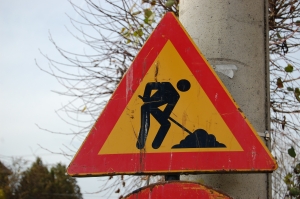Roads, bridges, tunnels and other public and private property need to be regularly maintained. This job normally falls to construction workers. Construction workers may do a number of different jobs including building construction, remodeling existing structures or working on the streets to improve the transportation system in the U.S. 
Unfortunately, our Boston injury attorneys know that the nature of construction work is dangerous. This is especially true for workers in work zones on roadsides where they may be struck by passing trucks, cars or other vehicles. These workers must be protected and the Occupational Safety and Health Administration (OSHA) has provided a fact sheet on work zone traffic safety that establishes safety requirements and provides some tips for work zone safety.
OSHA Work Zone Safety Tips
According to OSHA, being struck or hit by a vehicle in a work zone is a common cause of workplace fatalities. To minimize the risk of a death occurring in a work zone, OSHA advises that:
- Every work zone should have traffic controls. These controls can include cones, barrels, barriers and signs.
- Drivers and pedestrians should be clearly pointed in the right direction and shown what route to follow when approaching and entering a work zone. Message boards, as well as signals and traffic control devices can direct drivers away from work zones so they give workers wide berth and don’t cause a crash.
- Barriers can be erected in work zones to help reduce the risk of a motorist intruding into the space and potentially striking a worker. These barriers can use sand, water or concrete. They can also take the form of crash cushions or collapsible barriers. Even a truck-mounted attenuator could potentially be used to prevent drivers from inadvertently entering a construction zone and striking a worker.
- Employers should pay special attention to flagging and to the work performed by flaggers, since people in this position can be especially vulnerable to a crash. Flaggers should always have high visibility clothing on, and flaggers should be trained and certified before being allowed to work in a real construction zone. Actual flags should only be used as a last resort, with “Stop” or “Slow” paddles and lighted paddles used when possible.
These are good general tips that it will largely fall upon employers to follow. Employers should arrange for and provide the traffic controls as well as the messaging information to show drivers where to go. If a barrier needs to be erected, the employer should also take on the responsibility for this in order to protect their workers.
Employers are in the best position to ensure that their workplaces don’t present an unreasonable danger- even if those workplaces are just roadside work zones. Employers are also on the hook for paying workers’ compensation benefits to employees if they get injured on the job. All of this creates strong incentive for employers to try to follow OSHA rules.
If you or a loved one has been injured or killed on the job, call Jeffrey Glassman Injury Lawyers for a free and confidential consultation to discuss your workers’ compensation case — (617) 777-7777.
 Massachusetts Workers Compensation Lawyers Blog
Massachusetts Workers Compensation Lawyers Blog

